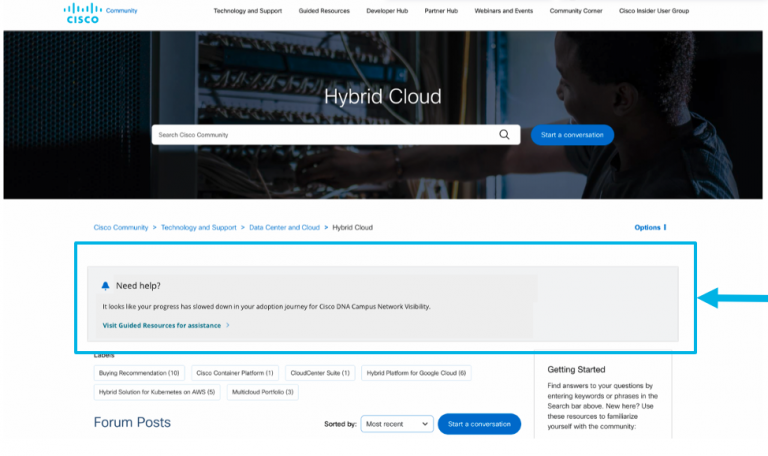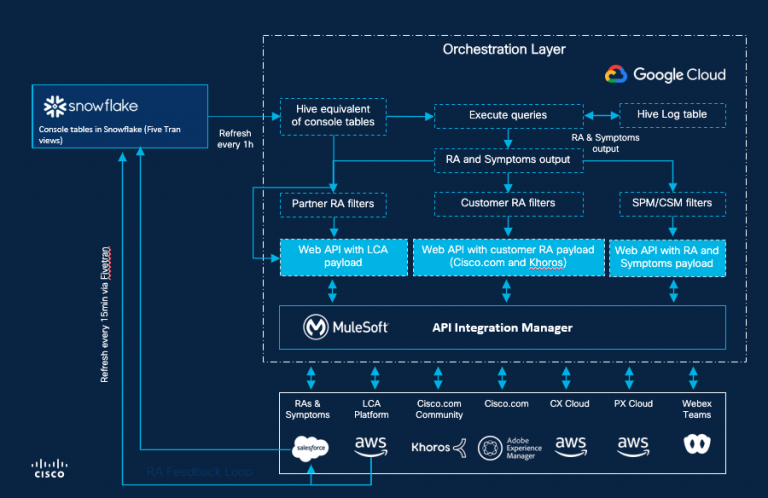- A few secretive AI companies could crush free society, researchers warn
- Key Cybersecurity Considerations for 2025
- Make the Most of Your Holiday Cybersecurity Awareness Efforts
- Stock your Kindle for summer: Get up to 93% off popular reads during Amazon's Book Sale
- I replaced my TV with a 4K UST projector - and the visual upgrade was worth it
How We Create Human Escalation Paths in Cisco’s Digital Experiences

Although I work on the Digital Experience team at Cisco, one core piece of our orchestration capabilities includes a human escalation path within our digital journeys known as “Recommended Actions.”
We can’t ignore that the full breadth of a customer’s experience at Cisco is not just digital – it’s a human-to-digital hybrid experience. By empowering our agents and partners with the context they need to help our customers be successful in their adoption or renewal journeys, we are improving that experience for everyone.
But we are a digital first team. That’s why our Recommended Action strategy starts with the customer—providing them with automated, digital self-serve experiences such as:
- email adoption journeys and renewal notifications
- personalized Cisco.com and Cisco Communities messaging and guided resources
- bots
- help request forms routed to the appropriate partner or Cisco representative should they need help along the way.
And even if the customer doesn’t explicitly reach out, we can pass along helpful data to our account teams or partners to let them know if a customer appears stalled, is using outdated software, hasn’t logged into a product in a while or connected telemetry, is at risk of not renewing, and more.
Recommended Action – Our Definition
For Cisco, when we talk about a Recommended Action (RA), we’re talking about a proactive strategy to guide a user – whether that is a customer, customer success representative, or a partner – to complete the right activity at the right time to drive successful adoption or renewal of a specific product.
For example, we can trigger an RA to a Cisco customer representative in SalesForce and a partner in our Lifecycle Advantage platform when a customer is struggling with an adoption barrier for more than a defined number of days in our onboarding journeys. We can also alert our support representatives if we do not have a contact at a company who has purchased a product or if a contact’s email has recently bounced and allow them to provide us with updated information.
These are just a few examples of when and why we would want to create a human escalation path from a digital journey.
Through a combination of our Recommended Action architecture (more on that below) along with our web personalization framework, we can also alert that same customer with a notification on Cisco.com or our Support Community. These alerts provide the customer direct access to specific help they need to overcome their adoption barrier. Consider this a digital assist to the self-guided experience.

When We Trigger Recommended Actions (Examples):
- Customer stalled in stage – customer stalled in adoption lifecycle stage beyond a certain number of days. When sending to a customer directly, we’ll suggest they visit a Guided Resources page on our Support Community to help them overcome adoption barriers. This page consolidates the best resources for each stage of the customer’s implementation workflow. For our partners or customer success representatives we’ll suggest they reach out to a customer to see how they can assist and provide a play card to help the rep guide the customer towards success.
- Not enrolled in digital adoption journey – This notification is triggered to our partners who are supporting customer adoption. It notifies a partner that a customer is not receiving our digital adoption journey (missing contact, account or use case is excluded by the partner, telemetry is not enabled, etc.). Then, the partner can choose to add a customer contact to enroll them on the digital journey. This recommended action alone was responsible for a 114% quarter over quarter increase in the number of partner provided contacts for our digital adoption journeys!
- Help Request form submitted – a customer has submitted a request for help, which is routed through our system to a Cisco support team to triage and engage the customer.
- Renewal risk – through a data science model, we’ve identified the customer as at risk of not renewing. This context helps Cisco and partner teams alike better handle conversations with customers around renewals, upsells, and overcoming adoption barriers.
- Webinar follow-up – a customer attended a webinar related to a product upgrade, so follow up from a Cisco representative or partner is recommended.
- Connect telemetry – letting the customer know they have yet to connect telemetry, what the benefits are from doing so, and how to do it.
How We Trigger Recommended Actions – the RA Architecture
Processing

GCP serves our as our processing layer. We’ve split out the processing and logs into branches specific to the end user groups so that each group can have their own workflow, logs, and filters. So now if one group needs to pause or modify their RA flow or filters, it won’t disrupt any of the other RA recipients.
API Integration for Omnichannel RAs
Through MuleSoft, we’ve streamlined and simplified API connectivity and integrations, making it easier for us to connect to more end channels and enabling multichannel RAs. The goal here is to enable program scale as we won’t be limited to what channels we can show the RAs on or who we can deliver RAs to. Where we previously only delivered RAs to channels like our SFDC applications and Lifecycle Advantage, we’re now delivering RAs through Cisco.com, Cisco Communities, Webex teams, SFMC (our email automation platform), and are currently expanding into in-product support tools like WalkMe.
CMS for Scaling Content Updates
We’re currently working through a POC to incorporate our content management system (CMS) into the RA architecture, which will enable our business teams to not only make their own content edits without relying on developers, but also to push those content updates to all downstream channels simultaneously.
Collaborative Account Management
Another final piece of the future state RA architecture I’ll highlight is the feedback loop mechanism. The mechanism is actually quite simple to take data from an end channel and put it into our RA logs in Snowflake for redistribution to other end channels—ensuring all teams are working off the same information and enabling collaborative account management.
What’s Next?
Recommended Actions are just one of our orchestration team’s larger initiatives for taking our customer and partner experience at Cisco to the next level. Stay tuned for the next few chapters of our series where we’ll share insights on:
Thanks for reading and feel free to reach out with questions or similar challenges your team has faced. I’m always looking for our next orchestration use case.
Share:

